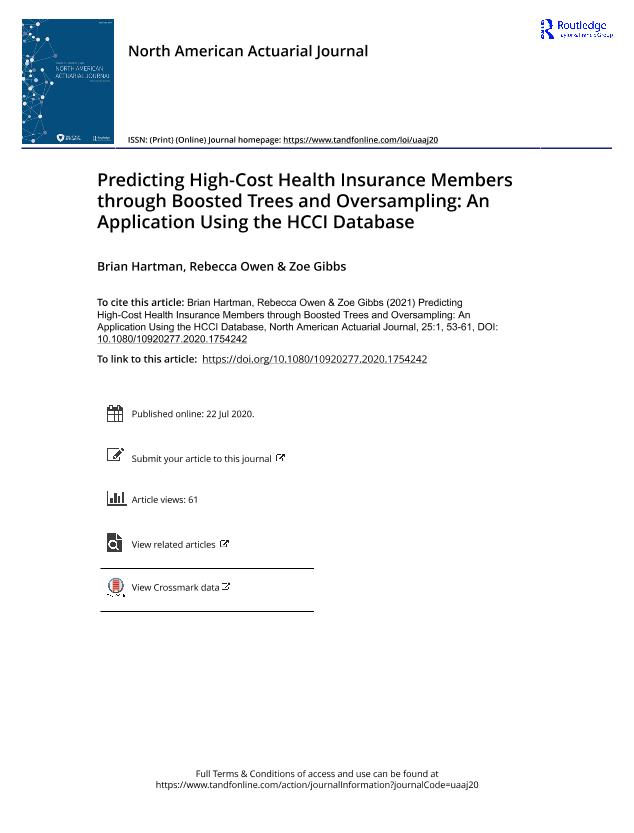Predicting High-Cost health insurance members through boosted trees and oversampling : an application using the HCCI database

Contenido multimedia no disponible por derechos de autor o por acceso restringido. Contacte con la institución para más información.
| Tag | 1 | 2 | Valor |
|---|---|---|---|
| LDR | 00000cab a2200000 4500 | ||
| 001 | MAP20210010781 | ||
| 003 | MAP | ||
| 005 | 20210405201151.0 | ||
| 008 | 210331e20210301esp|||p |0|||b|spa d | ||
| 040 | $aMAP$bspa$dMAP | ||
| 084 | $a6 | ||
| 100 | 1 | $0MAPA20130016856$aHartman, Brian M. | |
| 245 | 1 | 0 | $aPredicting High-Cost health insurance members through boosted trees and oversampling$b: an application using the HCCI database$cBrian Hartman, Rebecca Owen, Zoe Gibbs |
| 520 | $aUsing the Health Care Cost Institute data (approximately 47 million members over seven years), we examine how to best predict which members will be high-cost next year. We find that cost history, age, and prescription drug coverage all predict high costs, with cost history being by far the most predictive. We also compare the predictive accuracy of logistic regression to extreme gradient boosting (XGBoost) and find that the added flexibility of the extreme gradient boosting improves the predictive power. Finally, we show that with extremely unbalanced classes (because high-cost members are so rare), oversampling the minority class provides a better XGBoost predictive model than undersampling the majority class or using the training data as is. Logistic regression performance seems unaffected by the method of sampling. | ||
| 650 | 4 | $0MAPA20080602437$aMatemática del seguro | |
| 650 | 4 | $0MAPA20130012056$aGastos médicos | |
| 650 | 4 | $0MAPA20120011137$aPredicciones estadísticas | |
| 651 | 1 | $0MAPA20080638337$aEstados Unidos | |
| 700 | 1 | $0MAPA20210005367$aOwen, Rebecca | |
| 700 | 1 | $0MAPA20210005374$aGibbs, Zoe | |
| 773 | 0 | $wMAP20077000239$tNorth American actuarial journal$dSchaumburg : Society of Actuaries, 1997-$x1092-0277$g01/03/2021 Tomo 25 Número 1 - 2021 , p. 53-61 |

